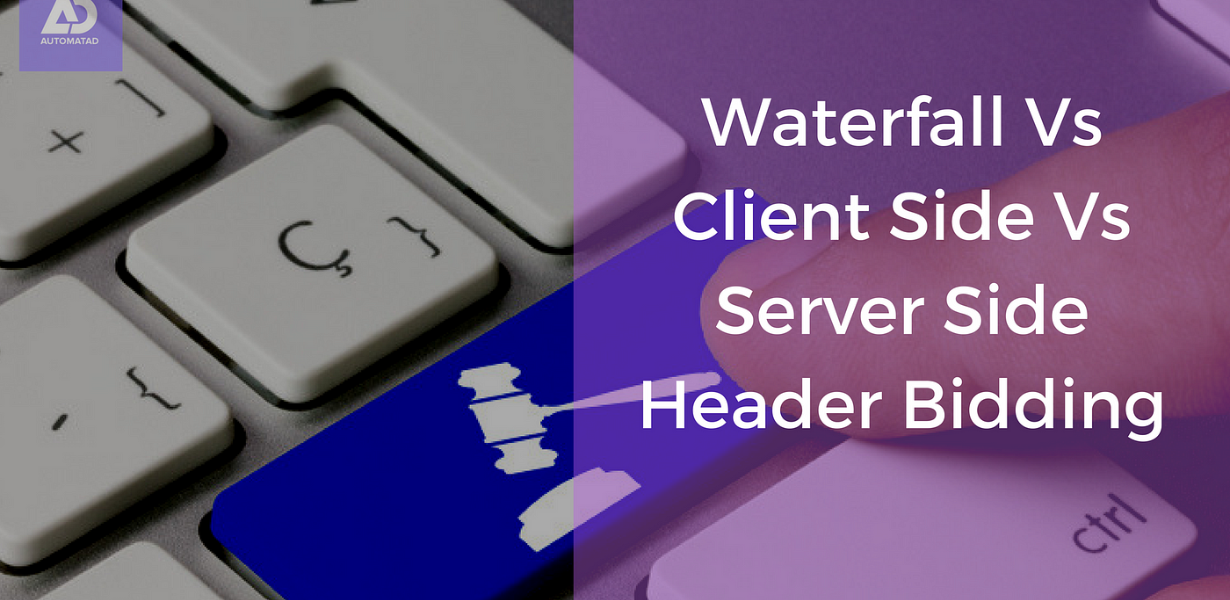
Advanced Revenue Maximization Strategies: A Tech Enthusiast’s Guide to Server-Side Header Bidding
- Post
- August 9, 2023
- Ad Serving Tech, Header Bidding, Server-Side Header Bidding
- 0 Comments
In the ever-evolving landscape of online advertising, staying ahead of the curve is crucial to maximize revenue. One of the most innovative and effective techniques to achieve this is Server-Side Header Bidding. This advanced strategy has taken the digital advertising world by storm, offering a potent solution to the challenges posed by traditional header bidding. In this comprehensive guide, we delve deep into the intricacies of server-side header bidding, exploring its benefits, implementation, optimization, and more. Let’s embark on a journey of revenue enhancement that’s bound to reshape your advertising approach.
Understanding Server-Side Header Bidding: Unveiling the Power Within
What is Server-Side Header Bidding?
Server-side header bidding, often referred to as SSHB, is an advertising technology that transforms the traditional auction process by moving it from the user’s browser to an external server. Unlike client-side header bidding, where auctions compete within the browser, SSHB conducts auctions in a unified and streamlined environment. By centralizing the process, SSHB enables publishers to efficiently manage multiple demand sources simultaneously, resulting in improved bid accuracy, reduced latency, and enhanced user experience.
The Key Advantages of SSHB
- Reduced Latency: With SSHB, bid requests are processed externally, alleviating the burden on the user’s device and leading to faster loading times.
- Enhanced User Experience: The faster loading times contribute to a seamless browsing experience, reducing the likelihood of user drop-offs.
- Holistic Demand Integration: SSHB accommodates multiple demand partners, optimizing competition and potentially driving up bids.
- Accurate Bidding: Centralized auctions mitigate bid discrepancies, resulting in more precise bidding and improved revenue potential.
- Ad Fraud Prevention: By conducting auctions away from the browser, SSHB minimizes the vulnerability to ad fraud tactics.
Implementing Server-Side Header Bidding: Steps to Success
Step 1: Partner Integration and Setup
Successful SSHB implementation begins with partnering with a reliable third-party technology provider. Choose a partner that offers robust demand connections, seamless integration, and thorough support throughout the process. The setup typically involves adding a code snippet to your webpage that communicates bid requests to the external server.
Step 2: Setting Up Ad Server and Header Bidding Wrapper
Integrate your ad server with the chosen SSHB solution and set up the header bidding wrapper. The wrapper acts as a mediator between the demand partners and the ad server, ensuring efficient bid request handling and response management.
Step 3: Demand Partner Configuration
Configure your demand partners within the header bidding wrapper. This involves defining parameters such as bid floors, targeting criteria, and priority levels. A balanced mix of demand partners maximizes competition and revenue potential.
Optimizing Server-Side Header Bidding: Unleashing Full Potential
A/B Testing for Bidder Performance
Optimization is a continuous process in SSHB. Implement A/B testing to assess the performance of different demand partners. Evaluate metrics such as fill rate, bid accuracy, and revenue contribution. Based on the results, allocate more impressions to high-performing bidders.
Dynamic Floor Pricing Strategies
Implement dynamic floor pricing, where bid floors are adjusted in real-time based on factors such as user location, device type, and content category. This strategy ensures that you’re extracting optimal value from each impression.
Advanced Header Bidding Analytics
Leverage advanced analytics tools provided by your SSHB partner. Analyze auction data to gain insights into bidder behavior, bid response times, and auction dynamics. This information empowers you to refine your setup for better results.
Overcoming Challenges: Navigating the Complexities
Header Bidding Wrappers and Latency
While SSHB significantly reduces latency compared to client-side solutions, header bidding wrappers can introduce their own latency. Choose a wrapper that’s optimized for speed and efficiency to minimize any potential negative impact.
Demand Partner Management
Managing multiple demand partners can be intricate. Implement a streamlined process to monitor performance, assess bidder accuracy, and regularly reassess partnerships based on their contribution to your revenue goals.
Final Words: Mastering Revenue Maximization through SSHB
The era of traditional advertising strategies is gradually fading, making room for innovative approaches like Server-Side Header Bidding. By centralizing auctions, minimizing latency, and optimizing demand partnerships, SSHB opens new avenues for publishers to unlock untapped revenue streams. Embrace the power of technology, and revolutionize your advertising revenue game.
Commonly Asked Questions
Q1: Is server-side header bidding suitable for all types of websites?
A1: Yes, SSHB can be implemented across a wide range of websites, from small blogs to large-scale content platforms. The benefits of reduced latency and efficient demand integration apply universally.
Q2: How does server-side header bidding impact ad viewability?
A2: SSHB’s reduced latency and streamlined auctions contribute to improved ad viewability. Faster loading times enhance user experience and encourage longer engagement with ads.
Q3: Does server-side header bidding eliminate the need for waterfall setups?
A3: While SSHB optimizes demand partner competition, waterfall setups might still be relevant for certain cases. Publishers can assess their specific needs to determine the ideal approach.
Q4: Are there any potential downsides to server-side header bidding?
A4: Header bidding wrappers can introduce latency, and managing multiple demand partners can be complex. However, with careful partner selection and continuous optimization, these challenges can be mitigated effectively.
Q5: How frequently should I assess and adjust my demand partners in SSHB?
A5: Regular assessments are crucial to maintaining optimal performance. Aim to review and adjust demand partner configurations every few months, considering their contribution to your overall revenue goals.




